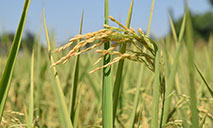Chinese astronauts return with first mission for space station construction accomplished
-- Having worked in the space station core module Tianhe for three months -- the longest-ever human space mission in Chinese history, three astronauts of the Shenzhou-12 crew returned to Earth on Friday, hitting a new milestone in China's space exploration.
BEIJING, Sept. 17 (Xinhua) -- Three Chinese astronauts, the first sent to orbit for China's space station construction, have completed their three-month mission and returned to Earth safely on Friday.
The return capsule of the Shenzhou-12 manned spaceship, carrying astronauts Nie Haisheng, Liu Boming and Tang Hongbo, touched down at the Dongfeng landing site in north China's Inner Mongolia Autonomous Region at 1:34 p.m. (Beijing Time).
The first manned flight during the construction of China's space station was a complete success, the China Manned Space Agency (CMSA) announced.
The return capsule of Shenzhou-12 separated from the spaceship's orbiting capsule at 12:43 p.m. under the command of the Beijing Aerospace Control Center. The braking engine of the return capsule then ignited, and the return capsule separated from the propelling capsule.
After the return capsule landed successfully, the ground search team arrived at the landing site. This is the first time that the Dongfeng landing site was used in the search and retrieval of the manned spacecraft. The medical personnel confirmed that the astronauts were in good health, after the hatch of the return capsule was opened.
The trio looked relaxed and waved to the ground crew after they exited the return capsule. Later, they were escorted to a helicopter by the ground crew, according to Xinhua reporters at the scene.
"Welcome back home for the Mid-Autumn Festival," the people cheered as the country's space heroes passed by.
The Mid-Autumn Festival, a traditional event symbolizing family reunion, falls on Sept. 21 this year.
The three astronauts arrived at Beijing by plane Friday night, but they will not go immediately back home to celebrate the festival with their families. Instead, they will undergo several weeks of quarantine for a comprehensive medical examination and health assessment, according to Xu Wenlong, a research assistant with the China Astronaut Research and Training Center.
The professional medical personnel will help the astronauts re-adapt to the gravity and environment on Earth, restore their body functions as soon as possible and improve their immunity, through multiple methods of exercise, diet, massage, physical therapy, and treatment with traditional Chinese medicine, Xu said.

Astronauts Nie Haisheng (C), Liu Boming (R) and Tang Hongbo wave at the Dongfeng landing site in north China's Inner Mongolia Autonomous Region on Sept. 17, 2021. Three Chinese astronauts, the first sent to orbit for space station construction, have completed their three-month mission and returned to Earth safely on Friday. (Xinhua/Ju Zhenhua)
The success of the Shenzhou-12 manned spaceflight mission laid a solid foundation for the continued construction and operation of the country's space station, the CMSA said.
On June 17, the Shenzhou-12 spaceship was launched from the Jiuquan Satellite Launch Center in northwest China and docked with the space station core module Tianhe. After the docking, the three astronauts entered the core module and began their three-month stay in space.
On June 23, Chinese President Xi Jinping held a video talk from the Beijing Aerospace Control Center with the astronauts, showing his consistent concern and support for the Chinese pursuit of its space dream.
"The construction of the space station is a milestone in China's space industry, which will make pioneering contributions to the peaceful use of space by humanity," said Xi, also general secretary of the Communist Party of China Central Committee and chairman of the Central Military Commission.
The Shenzhou-12 crew carried out a series of space science and technology experiments, and tested key technologies for the construction and operation of the space station, concerning long-term stays by astronauts, the recycling and life-support system, the supply of space materials, extravehicular activities (EVAs) and operations, and in-orbit maintenance.
They performed EVAs twice, on July 4 and Aug. 20, respectively.
The first EVAs, performed by Liu Boming and Tang Hongbo, took approximately seven hours. The astronauts accomplished tasks including equipment installation and panoramic camera lifting.
Nie Haisheng and Liu Boming carried out EVAs for the second time, installed extravehicular extended pump sets and lifted a panoramic camera in about six hours of EVAs.
The EVAs tested the performance and function of the new-generation homemade extravehicular mobility units and the coordination between the astronauts and the mechanical arm, as well as the reliability and safety of related EVA supporting equipment.
The mechanical arm installed on the core module played an important role in assisting the astronauts with their EVAs.
It is designed to help the astronauts in the assembly, construction, maintenance and repair of the space station, and to support space applications.
China launched its space station core module Tianhe on April 29 and the cargo craft Tianzhou-2 on May 29. The two completed a computer-orchestrated rendezvous and docking on May 30.
The Shenzhou-12 spaceship then formed a three-module complex with the combination of Tianhe and Tianzhou-2 after it was launched.
The Tianzhou-3 cargo craft and the Shenzhou-13 manned spaceship will also be launched later this year to dock with Tianhe, and another three astronauts will then begin their six-month stay in orbit.
After the five launch missions this year, China plans to have six more missions, including the launch of the Wentian and Mengtian lab modules, two cargo spacecraft and two crewed spaceships, in 2022, to complete the construction of the space station.
Photos
 Bumper harvest presents a magnificent scene of terraced rice paddies in SW China's Luzhou city
Bumper harvest presents a magnificent scene of terraced rice paddies in SW China's Luzhou city In pics: life of Siberian tigers in NE China's breeding center
In pics: life of Siberian tigers in NE China's breeding center Explore wonderland created by an alpine lake cluster in SW China's Yunnan
Explore wonderland created by an alpine lake cluster in SW China's Yunnan In pics: Museums across China unveil creative and culturally-inspired mooncakes
In pics: Museums across China unveil creative and culturally-inspired mooncakes
Related Stories
Copyright © 2021 People's Daily Online. All Rights Reserved.






